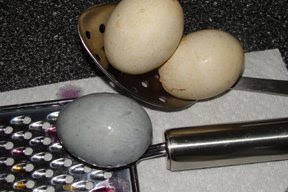Want to reduce the amount of water spent on plants this summer? The answer is mulch. Want to reduce the amount of time spent weeding your garden or flower beds? Mulch. Want to promote healthy roots and a stress-free tree? Mulch.
Seems like mulch is the the cure-all for all your gardening woes. It can be if you use the right material. Mulch comes in many forms: wood chips, pine needles, pebbles, cocoa bean hulls, newspaper, wool batting, straw, hay, grass clippings, bark, sawdust, leaves, compost, cardboard, and plastic film. Each of these materials provides non-chemical weed control that blocks light from penetrating the soil and halting weed germination.
The first consideration is if you want to use organic or inorganic mulch. What's the difference? Organic materials can change the composition of your soil. This means you may have to amend the soil because as the organic mulch decomposes (and remember, we like the fact it breaks down into the soil), it may cause a nitrogen deficiency in your plants.
The most frugal amongst the mulch choices are using materials you have at your disposal. Here's a quick overview of the most popular selections.
If you have pine trees, the needles can be used effectively. This can also make your soil slightly acidic.
Most people have grass clippings. These are excellent if not used too thick. Heavy concentrations tend to mat and develop a unique odor. That's a nice way to say this stuff can stink up your yard. This can be solved by spreading the clippings on cement and letting the sun dry the lawn clippings before placing the material around plants. If you use herbicides on your lawn, avoid using clipping around vegetables for at least six weeks.
Leaves are abundant and can suppress weeds very well, especially shredded oak leaves. The oak leaves decompose slower than those of other trees. Again, oak leaves contain tanic acid that can affect your soil.
Wood chips seem harmless and do an excellent job controlling unwanted plants. They also harbor termites and earwigs so it's best to keep wood chips at least four to six inches away from your house's foundation. When using wood chips, make certain they are free from copper chromium arsenic (CCA). You don't want CCA near your vegetables or polluting ground water. CCA is considered to be a pesticide and is not usually available in commercially produced bagged mulch. (If your neighbor offers you wood chips from a deck they ripped up, pass that freebie up. Chances are it contains CCA) You'll need two to three inches of wood chips to smother unwanted weeds.
Sawdust can also have the same potential problems with CCA as wood chips. This material also acts like a sponge soaking up moisture and holding it. Best to steer clear from using this freebie.
Unless you live in an arid region, pebbles can do more harm than good to your ecoscape. The rocks hold and reflect heat. While the plants roots are cool, the leaves have a hard time surviving without shade and water. The stones radiating heat will cause delicate, thin leafs to wither quickly. Yuccas and cactus will thrive.
Cocoa bean hulls are an excellent mulch unless you have a dog. Pets might ingest the hulls. If hulls are eaten, contact your vet for treatment for Fido or Fluffy. Best to steer clear of this method if you are a pet owner.
Straw has lots of advantages. It has a cooling effect on the soil and can be tilled into the ground after the growing season. Straw can contain weed seeds. To avoid this, purchase clean, dry straw, preferably older straw. The older the straw, the fewer seeds it contains. Keep in mind that this material can provide a nesting ground for anthropods that refuse to leave after your plants have finished growing for the season.
Black or white plastic is effective in thwarting weeds. All plastic must have micropores or holes in several places to allow water to reach the plants roots. The black plastic version helps raise soil temperature, usually early in the growing season. White plastic reflects light and is primarily used later in the season to reflect light and help fruit ripen on plants such as tomatoes. Remember to remove the plastic after the growing season. Plastic too close to your home's foundation can help move rain away and in some cases keep water dangerously close to your structure resulting in damage. Use this product cautiously.
Wool is a unique product that suppresses weeds, lets water pass through and repels bugs. It's true that moths like wool, but remember that some plants require moths for pollinization. The only drawbacks are cost and birds trying to nest in the material. Wool batting is expensive compared to newsprint or cardboard.
Newspaper is the ideal mulch; it decomposes after a few years and reduces weeds in your garden. Use at least 6-10 sheets of dampened paper in plant beds. Because it is a lightweight material, you'll need another medium to place on top of the newspaper to keep the pages from blowing away. Compost works nicely and amends the soil.











